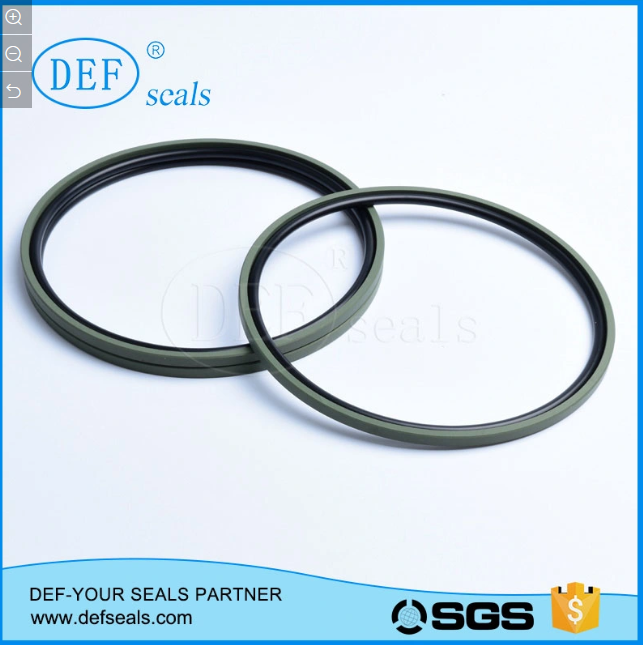The relationship between heat resistance and wear resistance of engineering plastics
2023-04-18
1: Measurement parameters for thermal performance of engineering plastics
Even a small change in temperature can have an impact on strength and rigidity of plastic products.
1) Continuous operating temperature
Indicates the heat resistance of plastic molded products. It is generally divided into physical heat resistance and chemical heat resistance. The former refers to the performance of plastic shaped specimens in a specified shape to maintain product shape at a specified heating temperature; The latter represents the thermal stability of molecular bonds in plastic molding materials. It mainly represents the heat resistance performance of plastic formed specimens under no load conditions.
2) Glass transition temperature
When the temperature is higher than Tg, the amorphous solid polymer will become soft and rubbery. It is very important to ensure that the use temperature of amorphous solid polymers is lower than Tg, so as to obtain ideal machine properties.
3) Thermal deformation temperature
Load deflection temperature refers to a method of determining the rigidity of plastics at high temperatures. It is obtained by continuously heating at a certain speed under a certain load until the sample shows the indicated deformation amount (0.254mm). Because in amorphous plastics, the load deflection temperature represents a temperature close to the lower limit of the glass flower transition temperature, it can be used as a practical reference indicator. However, in crystalline plastics, the load deflection temperature represents the temperature between the glass transition point and the crystallization melting point, so it is meaningless in both theory and practice, and the deviation of the measurement results is also significant. This parameter is used to measure the temperature tolerance of different materials under short-term heating and load conditions.
4) Linear expansion coefficient
The linear expansion coefficient refers to the expansion ratio of plastic molded products under a certain pressure at a temperature increase of 1 ℃, expressed as the linear expansion coefficient relative to the unit length. This coefficient is one of the important indicators for understanding the degree of product size change as the temperature of plastic formed products increases.
5) Thermal conductivity
The thermal conductivity represents the heat generated by a plastic product with a temperature difference of 1 ℃, an area of 1cm2, and a thickness of 1cm within 1 second. It is a reference indicator for studying the insulation performance of the target product when designing the product.
6) Specific heat capacity
Specific heat capacity refers to the heat capacity relative to the unit mass (lg) of plastic molding products. Generally, it refers to the amount of heat required for plastic molded products when the temperature rises by 1 ℃. The specific heat capacity is the same as the thermal conductivity, which is the reference data for studying the temperature rise of the target product during product design.
7) Embrittlement temperature
Clamp one end of the formed specimen of the specified shape and size with a test clamp, fix it in the test groove, immerse it in the designated low-temperature heat transfer medium at all levels, place it for (3+-0.1) minutes, and then strike it once with a hammer to determine its embrittlement temperature from the result of the specimen being damaged. When used at low temperatures, it is a factor that must be considered in design.
2: Factors Considering the Wear Resistance of Engineering Plastics
Special engineering plastics are increasingly replacing metals in high wear parts such as bearings and shaft sleeves
1. Difference between friction coefficient COF and wear resistance coefficient K
COF is used to measure the sliding resistance of two contact surfaces and can be very useful for comparing the "smoothness" between different materials. The lower the value, the smoother the material.
The K value indicates the relationship between material wear and pressure, speed, and time. The lower the value, the more wear-resistant it is.
2. Parameters that affect material wear resistance
(1) Material bearing surface load force P (ensure that P cannot exceed the maximum pressure that the material can withstand at this temperature, as shown in the attached table)
(2) Velocity of contact surface movement V
(3) Due to frictional motion, frictional heat can be generated (the accumulated frictional heat varies due to factors such as thermal conductivity and product structure of materials), which may cause damage to the contact surface due to overheating. The maximum PV value that each material can withstand is the ultimate PV.
Therefore, the selection of wear-resistant materials requires comprehensive consideration of the following factors:
1) The total load pressure P of the worn surface and bearing sleeve should not exceed the high compression strength at the working environment temperature
2) The working PV value cannot exceed the material limit PV
3) The product is suitable for heat dissipation structure (contact length, working environment, etc.) and surrounding temperature
4) Speed, movement speed, movement time, etc
5) Continuous lubrication during the wear-resistant process can greatly improve the wear-resistant life
6) If it is a plastic bearing, it is necessary to consider the bearing wall thickness and bearing aspect ratio
News







